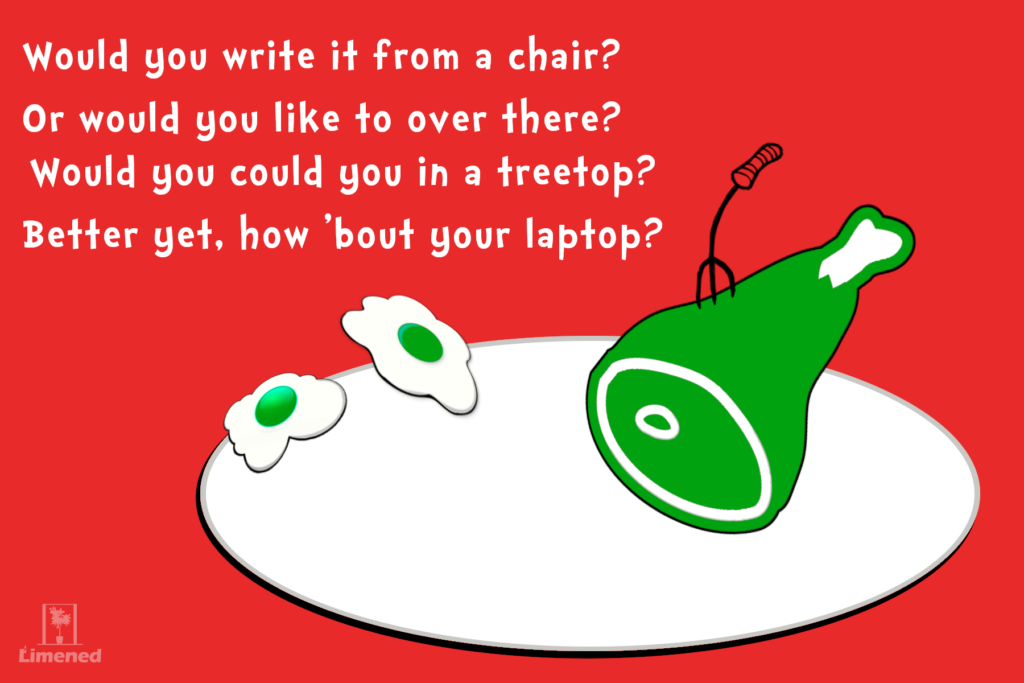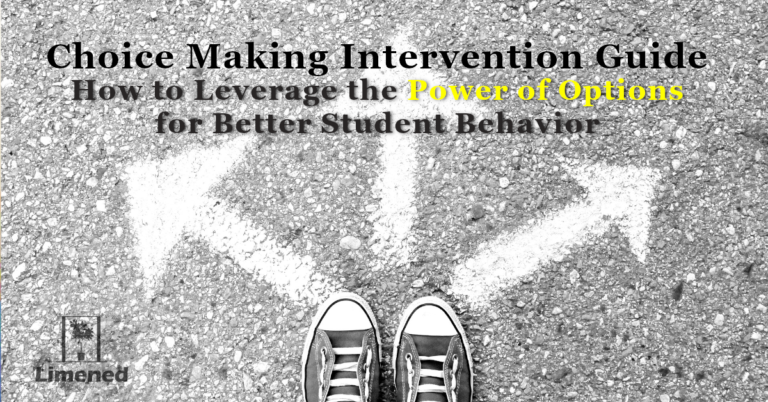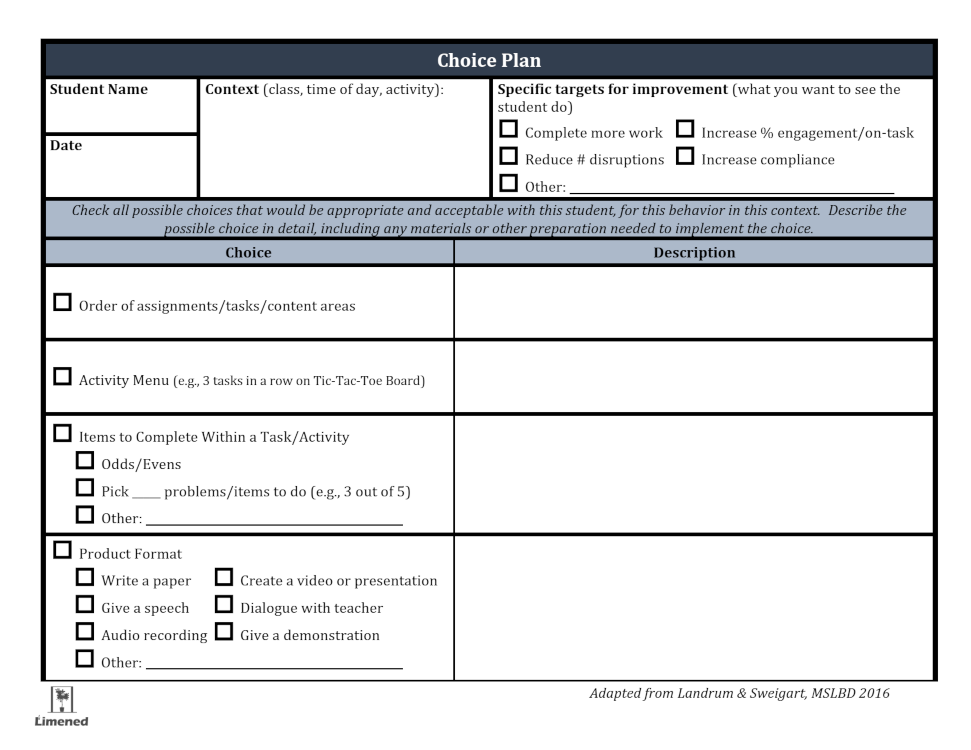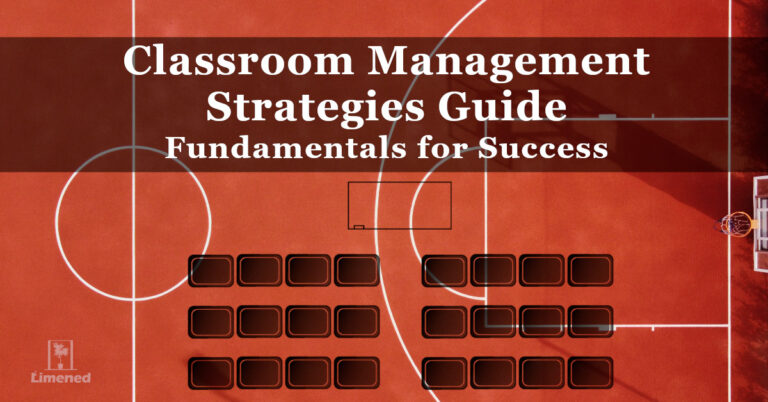If only there were a classroom management strategy that was incredibly easy to implement and instantly wiped away all of our misbehavior woes.
Well, spoiler alert: there’s not.
I always say that anyone who tells you otherwise, who suggests they have a silver bullet for behavior problems, is probably selling you something.
However, there are some behavior strategies that are simple to understand, easy to implement, and often surprisingly effective—at least at improving the odds that tomorrow will be a better day with student behavior.
One of these low-intensity strategies is choice making. If you provide choices to students, simply giving them options you consider acceptable for certain tasks and activities, there can be substantial benefits in the classroom.
In this article, I’ll lay out the benefits of giving students choice in the classroom and throughout the school day, share some insight into how to use choice effectively, and guide you through several examples of choice in action using a Choice Making Planning Template that you can use in your own practice.
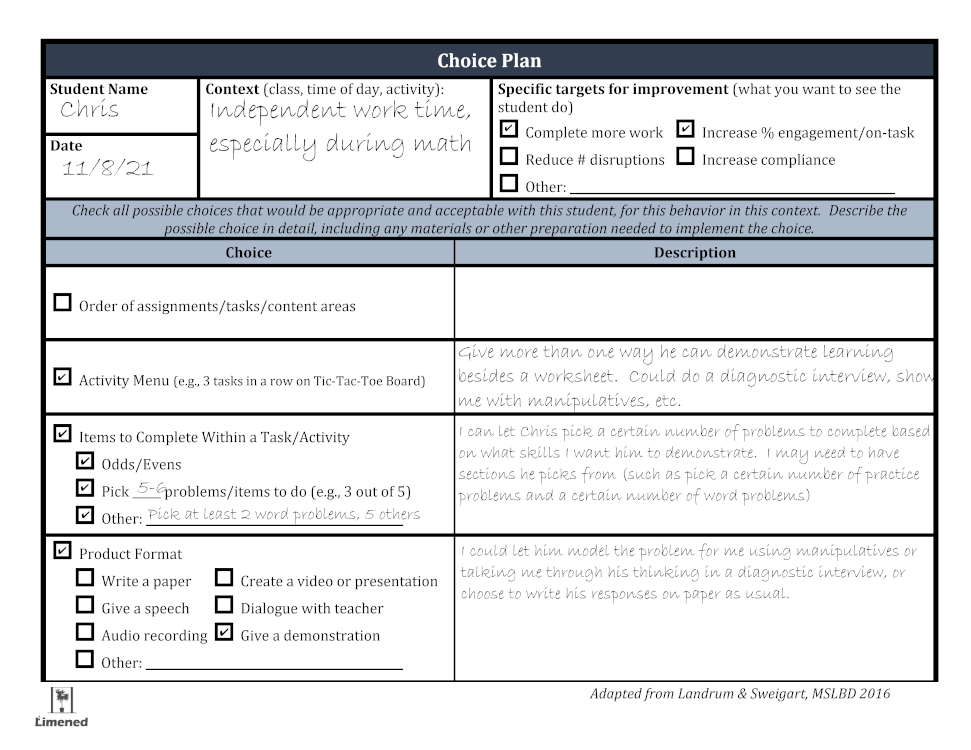
Get the Choice Planning Template
by signing up for our newsletter
What is choice making?
 Photo by Julia M Cameron from Pexels
Photo by Julia M Cameron from Pexels
Choice making is a low-intensity classroom management strategy that involves a teacher giving a student two or more options for how to engage in a certain task or activity. Providing choices is an antecedent strategy, which means it’s given before a predictable problem behavior occurs as a form of prevention.
A teacher can provide choices to the student, or even the whole class, at any time. However, it can be beneficial to think the choices through ahead of time. Something like our planning template (which I’ll provide examples of below) can help to make choice making more effective.
Planning is especially important if the options require any specific materials or modifications. Other than being prepared, the intervention pretty much just involves the teacher telling the student the options and honoring whatever choice the student makes.
Appropriate Choices
There may limitless choices a teacher could offer during any given school day. They just need to be options the teacher finds acceptable and that are inconsequential to actually engaging in the expected task or activity.
That’s the ultimate goal, of course: for a student to successfully engage in what’s expected of them. Not just to avoid difficult or inappropriate behavior.
I am reminded of a classroom I once visited. A teacher had been newly reassigned to work 1-on-1 in a self-contained classroom for a single pre-teen student who had become quite physically aggressive.
This poor teacher had been having a rough time of it, having been moved into a very challenging situation after a decade of only teaching groups of students with learning disabilities. She was looking for some advice on how to avoid dangerous behavior.
We were discussing some simple strategies to start with, and choice came up as an option. She was excited to report, “Oh yes, I use choice. It’s great! Just watch next time you observe!”
Well, when I was observing in the morning, it came time for the two of them to do math. And she said, “Okay. It’s time for math. Do you want to do math…or coloring?”

No shocker here, the student chose coloring. I was waiting to see what would happen next, wondering how she was going to transition back to math.
About 30 minutes passed. A beautiful, intricate coloring sheet was half-completed. And the teacher said, “Oh, look at the time. Math’s over. Let’s put away our sheet and get ready for lunch.”
Now, choice making here was extremely successful at preventing aggressive behavior. It was also really successful at completely interfering with learning math.
That would make sense to me as an approach if the teacher had a plan to fade back over time; for example, if she were going to move to telling him let’s do 1 problem together first, then we’ll do your choice. After all, desperate times call for desperate measures.
However, fading wasn’t in her plan. I think her plan actually might have been to wait it out until she could find another job!
Types of Choices
Although math or coloring might not be the best choice for us to use, there really are a ton of options.
Providing choices reminds me of Sam-I-Am and his green eggs and ham, because you can give so many different combinations of options. Do you want to do your work at the table or the desk? Library or media center? Do you want paper and pencil? Or prefer a pen? Or marker or crayons? How about with an iPad or on a computer? On your own or down in the office with Ms. Sooter? Want to do your art project first or last, or rather write our paper on the past?
Here are some examples for different types of choices:
| Type of Choice | Examples |
| Order of Content, Tasks, or Assignments | “Do you want to start with reading or math?“ “Okay, we have 3 assignments still to work on. Your math sheet, your English workbook, and your history project video. Which one do you want to knock out first?“ |
| Activity Menu | “There are nine options for you to show your learning on this tic-tac-toe board. Pick any three in a row!“ |
| Which Items to Complete within a Task | “It’s time for your independent math work on p. 27 in your workbook. Do you want to do the odd or evens? Your choice.“ |
| Product Format | “You can pick from several options for this project to show what you know. You can write a research paper, design a webpage, create an in-depth video, or give a speech to the class. Which would you prefer?“ |
| Where to Work | “It’s time to work on the worksheet I handed out. Would you rather do it at your desk or at the back table? Or you could even use my desk while I’m helping other students. Which would you like?“ |
| Whether to Work with Others | “Do you want to work by yourself or with a partner?“ “Time for math; I’ve got our manipulatives ready to go! Do you want to work with me or Ms. Davis?“ |
| Materials to Use | “You can use a pencil, pen, markers, or crayons for this. What would you like?“ “Do you want to write this out by hand or type it on the computer?“ “Do you want to use our tub of manipulatives or the virtual manipulatives on the iPad?“ |
| Reinforcer or reward | “What would you like to work for today? Pick one thing from our reward menu.“ “You get a choice of what to do after you complete this activity. Do you want 5 minutes of drawing time or computer time?“ |
| Others | “It’s time to go back to class. Do you want to go down this hall or that hall to get back?“ |
Benefits of Student Choice in the Classroom
Student choice in the classroom is a remarkably powerful intervention with a variety of benefits for our students and our classrooms. Giving choices helps children by providing a variety of behavioral and developmental benefits, including increasing compliance with directions, improving active engagement in their learning, decreasing disruptive behaviors, and developing their self-determination and self-advocacy skills.
1. Increase compliance.
Some students struggle to follow directions. Some come around but take forever to get started doing whatever we’ve asked. Or they require what seems like an endless amount of prompts. Others seem to get caught up in doing other things, like rummaging around in their backpacks. And some flat out refuse with their chin up.
Non-compliance can look a lot of different ways. However non-compliance shows up, offering choices can help. When given choices along with directions, the probability students will comply goes up.
2. Improve active engagement.
David Berliner has suggested that the relationship between time engaged and learning “has the same scientific status as the concept of homeostasis in biology, reinforcement in psychology, or gravity in physics.” The relationship is foundational and intuitive: the more students are actively engaged, the more they learn.
Giving students choice in the classroom enhances their engagement, making them more likely to become on-task more quickly and to sustain their efforts. This leads to greater learning.
3. Decrease disruptive behavior.
Another benefit of improved active engagement is that students are less likely to engage in other things beside the task at hand. So offering choices to students can also lead to decreases in disruptive, destructive, and other inappropriate behavior.
4. Promote self-determination and self-advocacy.
When we are teaching our students, we are working toward something greater than the specific content standard or skill in a lesson. Ultimately, we are preparing them for life. For adulthood. For independence. And hopefully a wonderful quality of life.
Self-determination is a person’s ability to manage their own life, making decisions, problem-solving, and being responsible. Students with and at-risk for disabilities often need intentional support to develop self-determination skills.
Giving choices (and sometimes even including the option for them to say “No”) helps foster student self-determination as well as their ability to advocate for themselves about what they want and need.
How to Use the Choice Making Strategy in the Classroom and Beyond
You can provide choices to students in the classroom and throughout the school day as both a back-pocket strategy to pull out any time and a systematic intervention. For the latter, choice involves the following steps:
- Identify the challenging behavior you want to focus on and the situations where it typically happens.
- Brainstorm a set of acceptable options.
- Prepare any necessary materials, modifications, or other arrangements.
- Provide choices before the situations when challenging behavior usually occurs.
- Provide sufficient wait-time for the student to make a choice.
- Allow whatever option the student chooses, and reinforce their choice.
- Keep track of the student’s behavior with data to see if choice is working.
Limened’s Choice Making Intervention Guide provides greater detail on these steps as well as videos, tips, and other resources.
Examples of Different Ways to Provide Choices to Students
Choice Making Activities
Here are a few videos I really like of ways to provide choices and examples of choice in action with students. The first video is an inspiring visualization of different choice making activities for promoting student empowerment. The second includes several teachers addressing how they use choice in their practice, and we get to see choice in action with their students. And the final video shows how we can use visual supports to provide choices to students with Autism Spectrum Disorder.
Choice Making Planning Template
It may be helpful to use a planning template, like the one I provide here (click to enlarge the images for a preview), to make sure you think through all the possibilities. This template is a fillable PDF that includes an array of different types of choice and common options for each type with clickable checkboxes.
I’ve created two example scenarios using the template to highlight different ways to provide choices for different needs:
Example 1. Using choice to promote engagement with independent math work
This student is often off-task right from the start and is generally disengaged during math. And well, pretty much any time independent work is on the table. Not surprisingly, Chris doesn’t complete much work.
His teacher has targeted improving work completion and engagement and has identified a variety of possible choice options.
She’s willing to let him show what he’s learned in a variety of ways (e.g., model with manipulatives, diagnostic interview). And she’s open to different ways for Chris to pick which problems to work on.
She also has plans for how he could work in different areas, with different people, and using different materials as well as for different rewards.
Finally, she’s thought through simple ways to collect data on his work completion and engagement.
Example 2. Using choice to avoid a hallway power struggle
This choice making example takes me back to my days as a middle school teacher for students with emotional and behavioral disorders.
I had more than one student who struggled with going back to class if they had to come out for some reason. Sometimes this looked like them just crossing their arms and refusing to go in when I told them it was time to get back to class. Other times it might be shouting at me. Or running down the hall. Or other less fun things.
I discovered a pretty powerful choice for a few of my students. It sounded like this: “Hey, it’s time for us to head back to class. Do you want to go this way or that way?” This way was the hall that lead directly to their class. That way was the long way around the school. They always chose that way and would be off walking ahead of me without realizing what had happened.
The long way added 30 seconds to our walk and saved me countless time in power struggles.
Conclusion
Provide choices, improve behavior may be a bit of an over-simplification. However, offering choices to students is a powerful and very practical strategy that can improve the probability of multiple meaningful outcomes.
If you’ve made it this far, hopefully you found the information and template useful for helping your own students be successful. You can take a deeper dive into choice making if you want to learn more.
As you work on improving student behavior, you may hit some barriers along the way that I hope to help with. For example, you may need strategies for when choice doesn’t seem to be enough and a student just seems stuck in non-compliance or options for a simple, but underutilized, reinforcer that helps most kids. Or you may be searching for more ready-to-go intervention materials, such as behavior contract templates. Or perhaps you’ll want to explore all we have about student behavior, which is always growing.

Get our Choice Planning Template
by signing up for our newsletter



